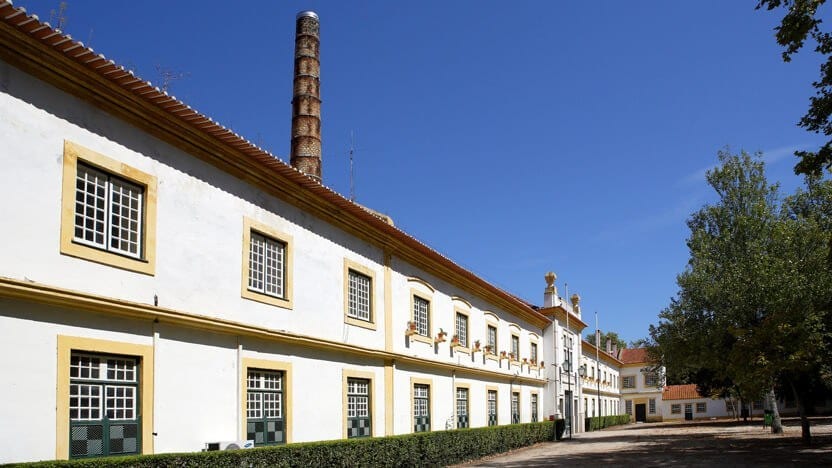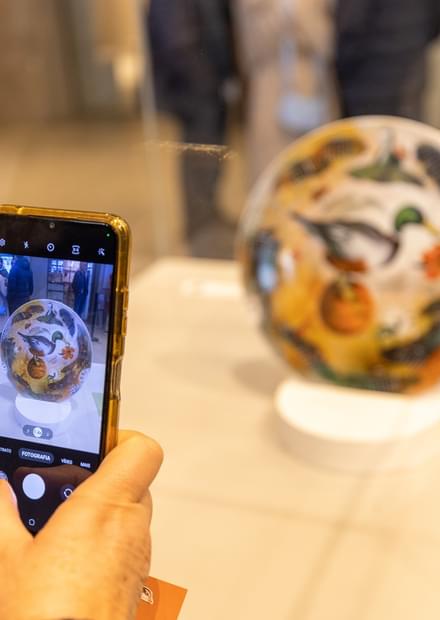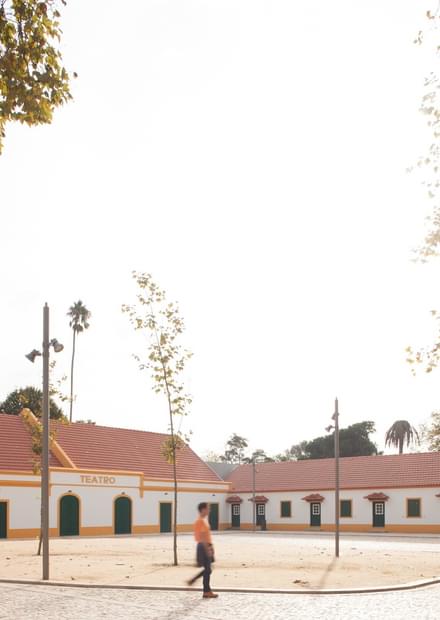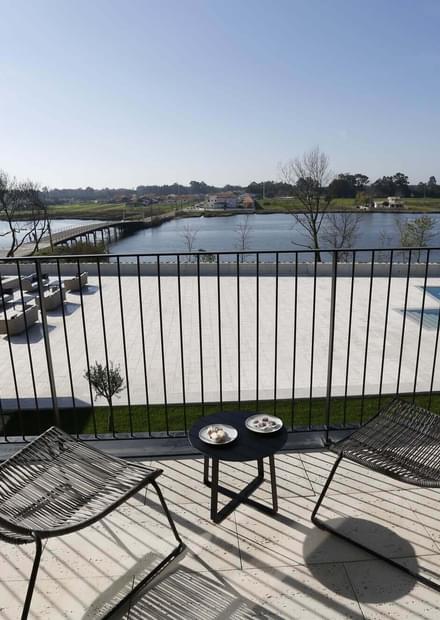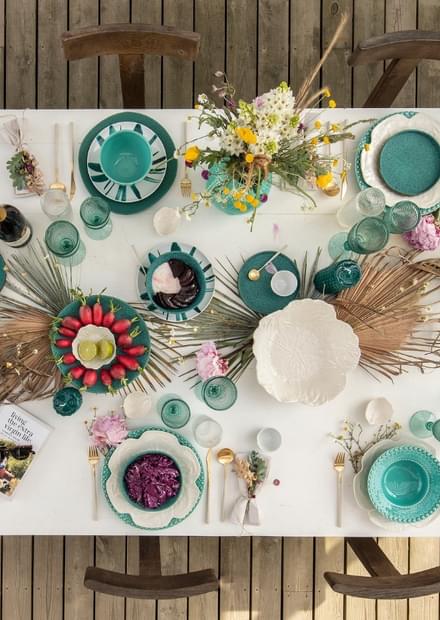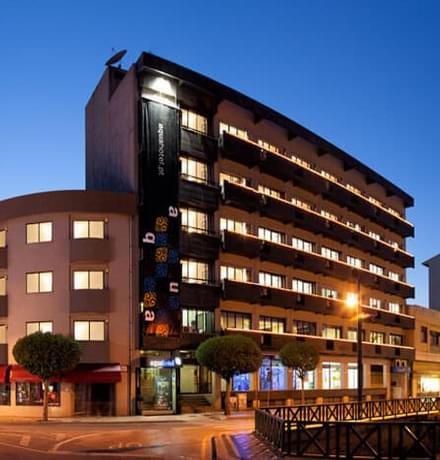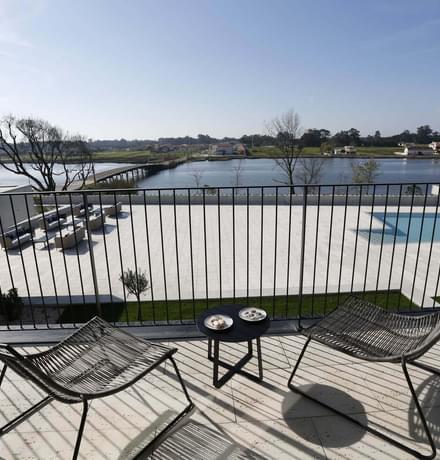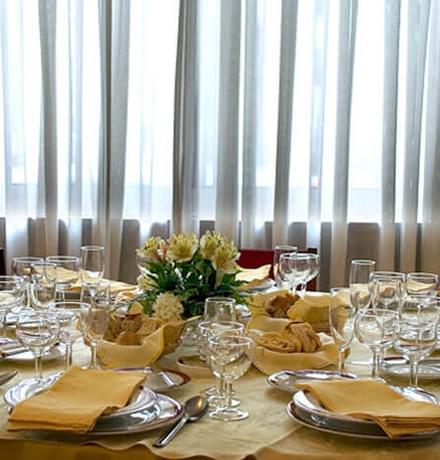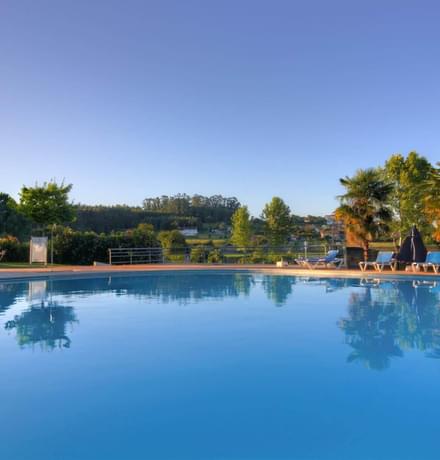To understand the importance of the Vista Alegre brand is to learn about the time periods of its History, to know its characters and artistic movements which influenced it, understand its particular constraints. The Vista Alegre Historic Museum reunites the History of the company created by José Ferreira Pinto Basto, the evolution of the factory and of its collections throughout almost 200 years of existence, as well as the emblematic connection between the factory and the people of Ílhavo.
At the factory, you should also visit:
The Palace
This lavish area was built during the 17th century and it was the house of seven Pinto Basto family generations. It’s surrounded by magnificent gardens and a terrace which spreads alongside the Aveiro Lagoon. Nowadays, the palace is used to host Vista Alegre Factory guests.
The Chapel of Our Lady of Penha de França
The chapel dedicated to the patroness of Vista Alegre, founded in the late 17th century by Bishop Manuel de Moura Manoel, is an imposing baroque style building with magnificent decoration details, such as the figure of Our Lady of Penha de França receiving believers in the façade or the remarkable set which coats the interior with 17th century tile, gilded woodcarvings and freshly painted vaults. The grave of the founder, sculptured in Ançã stone by Claude Laprade stands out. The space was classified as a National Monument in 1910.
The Vista Alegre Quarter
The Pinto Basto family showed a sense of social awareness way ahead of their time. During the first years following the creation of the factory, they ordered a quarter for the workers to be built because the factory was too far from surrounding towns, from which most of them came from. Some workers still live at these houses today.
The Theater
Built to ensure that the workers and people who lived at the social quarter had a leisure and entertainment space, the Vista Alegre Theater is now used by an amateur theatre group made by factory workers. Sometimes the stage is also borrowed to other artistic groups in Aveiro.
The Factory
To visit Vista Alegre Factory is to enter a world which keeps the secrets of a century old of the most international Portuguese porcelain manufacturing process.
Known as one of the most prestigious porcelain brands in the world, Vista Alegre Factory was created by José Ferreira Pinto Basto early in the 19th century to produce porcelain, glass and chemical processes. In 1812, Basto bought the Ermida Farm, situated in Ílhavo, near the Aveiro Lagoon. It was a land full of minerals, clay and white sand, which were essential to produce ceramics, and, shortly after, he bought all the surrounding areas. Among them was Vista Alegre Farm where there was a palace, a chapel and several buildings and it was here that Pinto Basto built his porcelain factory. In 1824, King John VI granted it a royal warrant and five months later, it received the title of Vista Alegre Royal Factory.
To visit Vista Alegre Factory is to enter a world which keeps the secrets of a century old of the most international Portuguese porcelain manufacturing process. Go through this space and follow the entire creation process of some of the most emblematic Portuguese porcelain pieces from the dough composition until the final boiling. Discover the painting school which, throughout the factory’s history has been essential both in training young artists and preserving a tradition of excellence. At the Manufacturing area, discover the reason why hand-painting exceptionally distinguishes Vista Alegre, as this is one of the few industries which still keeps a specialized and qualified labour force especially for the production of prestige pieces. Along with the excellence of brush painting, you will also see the technological advances in the factory’s production, a tendency which was decisive since late 19th century to keep Vista Alegre at the forefront of porcelain production and design.

